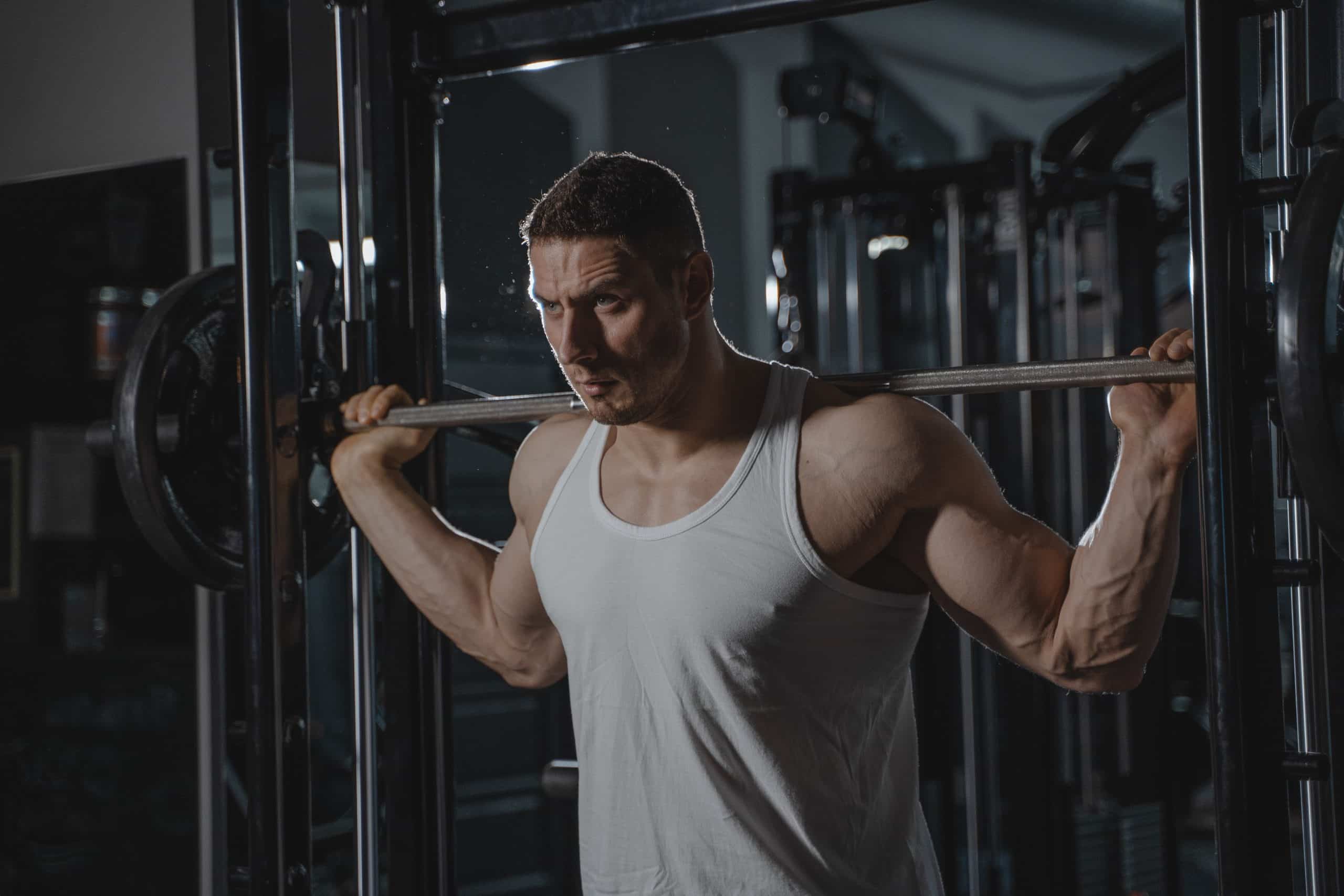The Ultimate Guide to Proper Breathing and Bracing Techniques for Compound Lifts
Proper breathing and bracing can help you generate more power, increase your stability, and reduce the risk of injury during compound lifts.
In this ultimate guide, we'll cover everything you need to know about breathing and bracing during compound lifts. We'll explain the mechanics of breathing and bracing, provide step-by-step instructions on how to perform them correctly, and offer tips for troubleshooting common mistakes.
Whether you're a beginner or an experienced lifter, this guide will help you improve your technique and take your lifts to new heights.
First let's take a look at the five different chapters:
- The Importance of Breathing and Bracing for Compound Lifts: In this chapter, we'll explain why breathing and bracing are so crucial for performing compound lifts correctly and safely. We'll explore the role that breathing and bracing play in generating power, maintaining stability, and preventing injury.
- How to Breathe Properly During Compound Lifts: Breathing is a key component of effective bracing, and in this chapter, we'll provide step-by-step instructions on how to breathe correctly during compound lifts. We'll explain the difference between chest and belly breathing, discuss when to inhale and exhale during each lift, and offer tips for maximizing your breath capacity.
- How to Brace Properly During Compound Lifts: Bracing involves engaging your core and creating tension throughout your body to maintain stability during lifts. In this chapter, we'll explain the mechanics of bracing, offer step-by-step instructions on how to brace correctly for different lifts, and provide tips for troubleshooting common mistakes.
- Common Mistakes and How to Fix Them: Even experienced lifters can struggle with breathing and bracing technique. In this chapter, we'll discuss some of the most common mistakes that lifters make when it comes to breathing and bracing, and offer advice on how to correct them. We'll cover issues like over-breathing, under-bracing, and improper timing.
- Applying Breathing and Bracing Techniques to Different Compound Lifts: While the basic principles of breathing and bracing remain consistent across different lifts, there are some nuances to consider for each exercise. In this chapter, we'll provide specific instructions on how to breathe and brace correctly for different compound lifts, including squats, deadlifts, bench presses, and overhead presses. We'll offer tips on how to adjust your technique for different variations and weights, and discuss how breathing and bracing can help you improve your performance.
1. The Importance of Breathing and Bracing for Compound Lifts
Compound lifts, such as squats, deadlifts, bench presses, and overhead presses, are some of the most effective exercises for building strength, power, and muscle mass. However, they can also be some of the most challenging and risky exercises to perform. Proper breathing and bracing techniques can help you perform these lifts safely and effectively, while also maximizing your performance.
Breathing plays a key role in generating power during compound lifts. When you inhale, you create intra-abdominal pressure, which helps stabilize your spine and generate force throughout your body. When you exhale, you release that pressure and allow for a controlled descent or ascent. The timing and rhythm of your breathing can also affect the efficiency and effectiveness of your lifts.
Bracing involves engaging your core and creating tension throughout your body to maintain stability during lifts. This can help prevent injuries and improve your performance by allowing you to generate more power and maintain proper form. Bracing correctly can also help you recruit more muscle fibers, reduce your risk of injury, and increase your overall strength.
Proper breathing and bracing can help you perform compound lifts with more confidence and control, allowing you to lift heavier weights, achieve better results, and reduce your risk of injury. In the following chapters, we'll dive deeper into how to breathe and brace correctly during compound lifts, and offer tips and strategies for improving your technique.

2. How to Breathe Properly During Compound Lifts
Breathing is a critical component of proper bracing technique, as it allows you to create intra-abdominal pressure and maintain stability throughout your lifts. However, many lifters don't pay enough attention to their breathing technique, leading to inefficiencies, instability, and even injury.
To breathe properly during compound lifts, it's essential to start with good posture and alignment. Stand tall, engage your core, and keep your shoulders down and back. This will allow you to take in a full breath and maintain stability throughout your lifts.
When breathing during a lift, you have two main options: chest breathing and belly breathing. Chest breathing involves taking shallow breaths into your chest, while belly breathing involves taking deep breaths into your diaphragm and belly.
Belly breathing is generally considered more effective for compound lifts, as it allows you to create more intra-abdominal pressure and maintain greater stability. To perform belly breathing, inhale deeply through your nose, allowing your belly to expand fully. Then, exhale forcefully through your mouth, tightening your core and maintaining tension throughout your body.
The timing and rhythm of your breathing are also important considerations during compound lifts. In general, you should inhale before you begin the eccentric (lowering) portion of the lift, and exhale during the concentric (lifting) portion. This allows you to maintain stability and generate power throughout the lift.
By focusing on your breathing technique and incorporating belly breathing into your lifts, you can improve your stability, generate more power, and reduce your risk of injury. In the next chapter, we'll explore the mechanics of bracing and offer tips for performing this critical component of proper lifting technique.
3. How to Brace Properly During Compound Lift
Bracing is a crucial component of proper lifting technique, as it allows you to create tension throughout your body and maintain stability during heavy lifts. Without proper bracing, you're at risk of injury and may struggle to generate the power necessary for effective lifts.
To brace properly, start by engaging your core muscles, including your abs, obliques, and lower back. This will help stabilize your spine and allow you to transfer force from your lower body to your upper body more effectively.
Next, focus on creating tension throughout your entire body. This can include tightening your glutes, quads, and upper back, as well as gripping the bar tightly and setting your feet firmly on the ground. The goal is to create a solid, stable foundation that allows you to generate maximal force during the lift.
During the lift, maintain this tension throughout your body. This may involve holding your breath and creating intra-abdominal pressure, as we discussed in the previous chapter. However, it's important not to over-brace, as this can lead to reduced blood flow and fatigue.
To avoid over-bracing, try to find a balance between stability and tension. You should feel firm and stable throughout your body, but not so tight that you're unable to move fluidly during the lift. It may take some practice to find the right balance, so start with lighter weights and focus on maintaining good form and technique.
By mastering proper bracing technique, you can improve your stability, generate more power, and reduce your risk of injury during compound lifts. In the next chapter, we'll discuss some common mistakes to avoid when breathing and bracing, and offer tips for troubleshooting your technique.
4. Common Mistakes and How To Fix Them
Breathing and bracing are essential components of proper lifting technique, but they can be tricky to master. Even experienced lifters may make mistakes that can lead to inefficiencies, instability, and injury. In this chapter, we'll explore some common mistakes to avoid when breathing and bracing during compound lifts.
Mistake #1: Failing to maintain proper alignment
Proper alignment is critical for effective breathing and bracing technique. If you're hunched over, have a rounded back, or are otherwise out of alignment, you'll struggle to generate force and maintain stability during lifts. To avoid this mistake, focus on maintaining good posture and alignment throughout your lifts, standing tall with your shoulders down and back.
Mistake #2: Taking shallow breaths
Shallow breathing can limit your ability to generate intra-abdominal pressure and maintain stability during lifts. To avoid this mistake, focus on taking deep breaths into your diaphragm and belly, expanding your belly as you inhale.
Mistake #3: Over-bracing
While it's important to create tension throughout your body during lifts, over-bracing can actually limit your ability to generate power and lead to fatigue. To avoid this mistake, find a balance between stability and tension, creating enough tension to maintain stability without sacrificing fluidity of movement.
Mistake #4: Failing to breathe in a rhythmic pattern
Breathing in a rhythmic pattern can help you maintain stability and generate power throughout your lifts. To avoid this mistake, focus on inhaling before the eccentric (lowering) portion of the lift and exhaling during the concentric (lifting) portion.
Mistake #5: Ignoring feedback from your body
Your body can provide valuable feedback during lifts, including cues to adjust your breathing and bracing technique. To avoid this mistake, pay attention to how your body feels during lifts and make adjustments as necessary. For example, if you feel dizzy or lightheaded, you may need to adjust your breathing technique.
By avoiding these common mistakes and focusing on proper breathing and bracing technique, you can perform compound lifts more safely and effectively. In the next chapter, we'll offer some tips and strategies for improving your breathing and bracing technique.
5. Applying Breathing and Bracing Techniques to Different Compound Lifts
Now that we've discussed the importance of proper breathing and bracing technique and some common mistakes to avoid, let's explore some tips and strategies for improving your technique.
Tip 1: Practice with lighter weights
When learning a new technique, it's important to start with lighter weights to avoid injury and focus on proper form. Use this time to practice your breathing and bracing technique and focus on creating tension throughout your body without sacrificing form or stability.
Tip 2: Focus on your breath
Your breath is a crucial component of proper breathing and bracing technique. Focus on taking deep breaths into your diaphragm and belly, expanding your belly as you inhale. Try to breathe in a rhythmic pattern, inhaling before the eccentric (lowering) portion of the lift and exhaling during the concentric (lifting) portion.
Tip 3: Engage your core
Proper bracing technique starts with engaging your core muscles, including your abs, obliques, and lower back. This will help stabilize your spine and allow you to transfer force from your lower body to your upper body more effectively.
Tip 4: Create tension throughout your body
In addition to engaging your core, you should also focus on creating tension throughout your entire body. This can include tightening your glutes, quads, and upper back, as well as gripping the bar tightly and setting your feet firmly on the ground. The goal is to create a solid, stable foundation that allows you to generate maximal force during the lift.
Tip 5: Use visualization techniques
Visualization can be a powerful tool for improving your breathing and bracing technique. Before each lift, take a moment to visualize yourself executing the lift with proper technique, including your breathing and bracing. This can help you stay focused and reinforce proper technique during your lifts.
By incorporating these tips and strategies into your lifting routine, you can improve your breathing and bracing technique and perform compound lifts more safely and effectively. Remember, it takes time and practice to master proper technique, so be patient and persistent in your efforts. Watch this video on the Back Squat to put it all together:
